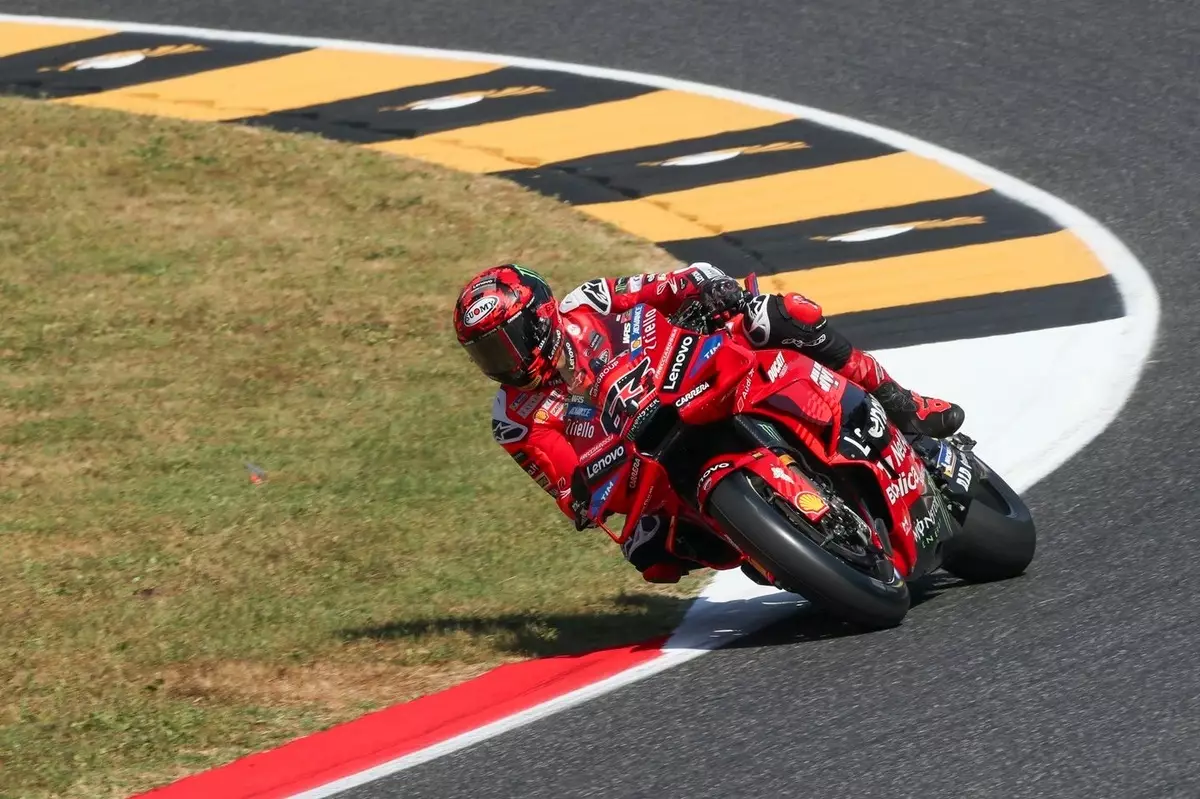As the Italian Grand Prix unfurls at the iconic Mugello circuit, the focal point of discussion isn’t merely about the racers or their lap times; it’s the intricate technology behind braking systems—specifically, the implications of adjusting brake disc sizes. The recent revelations about Francesco Bagnaia’s choice to shift to a larger brake disc during the Aragon race symbolizes more than just a tactical maneuver; it opens a Pandora’s box of performance trade-offs that every racer must navigate.
Benefits vs. Trade-offs: The Brake Disc Debate
The allure of a larger brake disc, such as moving from a standard 340mm to a more substantial 355mm, may seduce teams with promises of enhanced stopping power. Following Bagnaia’s adjustment, many have lauded this decision as a game-changer. Yet, what lies beneath this superficial enhancement is a mosaic of complexities. While the added disc size might improve braking performance on certain tracks, it also increases the overall weight of the bike, transforming the dynamics of handling and acceleration.
Brembo expert Andrea Pellegrini articulated this dilemma clearly, pinpointing the inherent contradictions in Bahnaia’s choice during the warm-up at Aragon. Each adjustment to the brake system creates ripple effects felt in handling, weight distribution, and thermal management. The Mugello circuit, with its unique challenges, serves as a reminder that not every track will yield the same performance benefits from ostensibly advantageous tweaks.
The Vital Role of Temperature Control
What often goes overlooked in the race to optimize braking systems is the critical role of temperature. Temperature management becomes essential in ensuring optimal stopping power—too low a temperature and riders risk diminished brake performance. Pellegrini explained that to raise the temperature effectively when utilizing a larger brake disc, additional weight in the form of covers is necessary. This contradiction lays bare the paradox of enhancing braking ability at the potential expense of overall bike performance.
As commentators and teams dissect the outcome of Bagnaia’s brake transition, the larger issues lurking in the background are crucial. How does this affect a rider’s confidence as they wrestle with the increased weight and altered handling characteristics? The answer could define not only the contenders’ strategies in the present race but also future competitions.
Navigating Innovation in a Competitive Landscape
In a sport that thrives on the cutting edge of technology, MotoGP teams are tasked with a balancing act that involves innovation and sound engineering. Every decision to adjust a bike’s specifications must be backed by empirical data and an understanding of individual rider preferences. Each rider is distinct, experiencing the nuances of machine handling in uniquely personal ways.
As we look towards the fluctuating dynamics of braking technology this weekend at Mugello, it becomes increasingly clear that understanding the intersection of technology and performance is fundamental. As teams calculate the risks of upgrading brake systems, they aren’t just strategizing for a single race; they’re shaping the narrative of the season, with implications for every twist and turn on the track.

